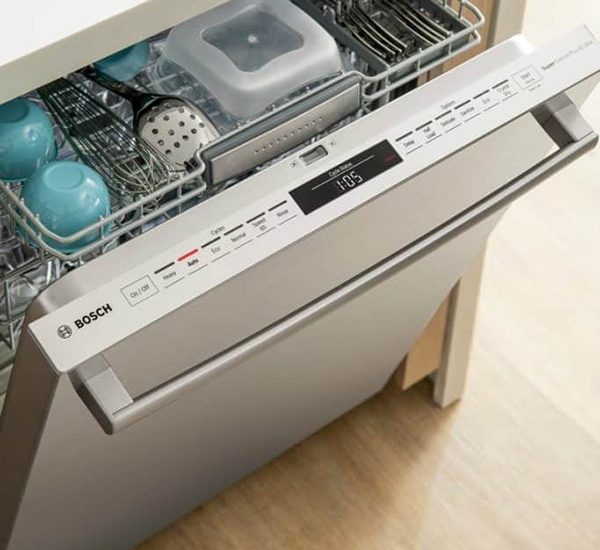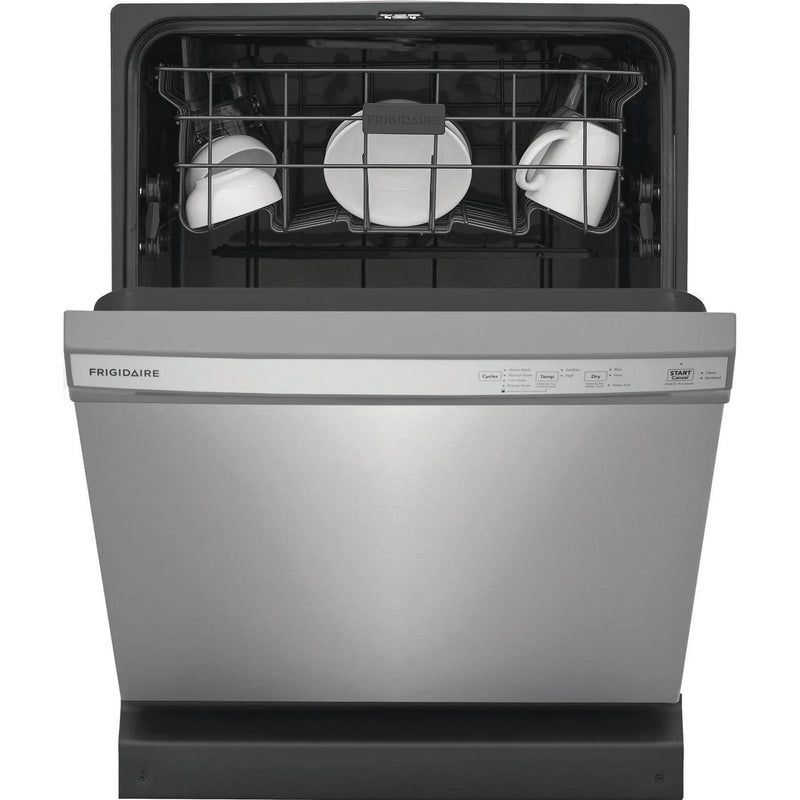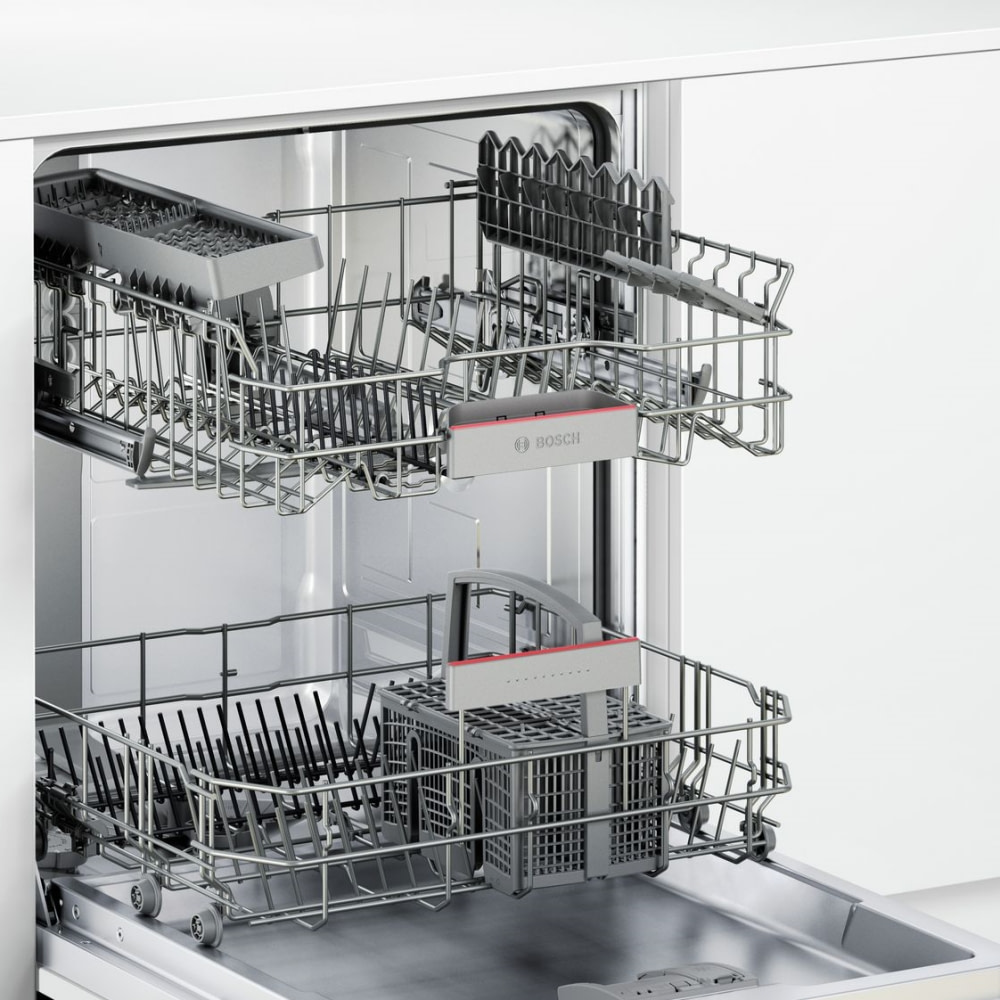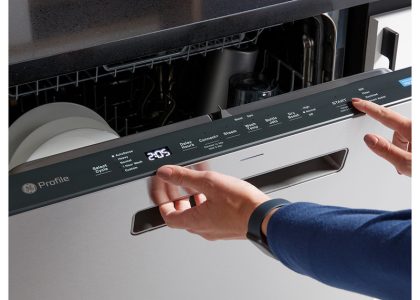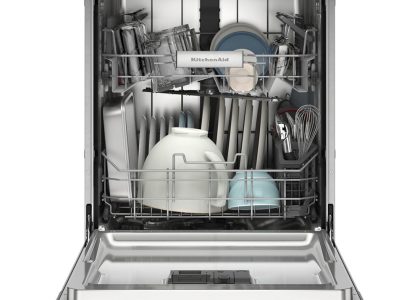Getting Started with Your Frigidaire Dishwasher
Embarking on the journey of mastering your Frigidaire dishwasher starts with two key steps. First, get to know your dishwasher model and all its unique features. Then, ensure your dishes are ready to be cleaned in the most efficient way possible.
Understanding Your Dishwasher Model and Features
Frigidaire offers a range of dishwashers with various functions tailored to different needs. To make the most of your appliance, familiarize yourself with the user manual. Identify the specific settings and features your model boasts, such as the number of wash cycles, special functions like steam clean, or whether it has a sanitizing mode. Knowing these will help you utilize your dishwasher to its full potential.
Preparing Your Dishes for the Dishwasher
Before loading your dishes, make sure they are dishwasher safe. Remove large food bits to prevent clogs and aid in better cleaning. However, don’t prewash dishes too much as the detergent needs particles to cling to. Check that items with labels are peel-off or water-safe, to avoid a sticky mess. Stack your dishes properly, without overcrowding, to ensure each one gets the full force of water and detergent. This preparation step is vital for achieving the best results and prolongs your dishwasher’s lifespan.
Loading the Dishwasher Efficiently
To get sparkling clean dishes, loading your Frigidaire dishwasher correctly is crucial. Efficient loading not only ensures each item gets thoroughly cleaned but also prevents damage during the cycle. Here’s how you can arrange your dishes for optimal results.
Arranging Plates, Bowls, and Silverware
For plates and bowls, use the bottom rack. Place them facing the center where the spray jets are strongest. This guarantees that water and detergent reach every surface. Arrange them by size, with larger plates at the back. Don’t overlap dishes; it blocks water flow. Silverware should go in its designated basket. Mix spoons, forks, and knives to stop them from nesting. Place some handles up and some down to enhance cleaning.
Placing Glasses and Other Fragile Items
Glasses and other delicate items belong on the top rack. This area experiences gentler water pressure, protecting your fragile dishes. Angle cups and mugs slightly downwards to allow water to reach inside and drain properly. Long-stemmed glasses need careful positioning to prevent breakage. Keep plastic items in the top rack too; they might warp if placed at the bottom where it’s hotter. Spacing items out prevents them from knocking into each other and ensures how to use Frigidaire dishwasher effectively.
Choosing the Right Detergent and Rinse Aid
Types of Dishwasher Detergents
Picking the right detergent is crucial for how to use Frigidaire dishwasher efficiently. You have various options. Powder, liquid, and tablet detergents each have their pros and cons. Powder detergents are economical and work well on simple washes. Liquid detergents dissolve quickly and are effective on grease. But be careful with the amount you use, as too much can leave residue. Tablet detergents offer convenience and precise dosage. Some have added benefits like built-in rinse aids or hard water performance. Choose based on your needs and water hardness.
Importance of Rinse Aid for Spotless Results
A rinse aid is vital for spotless dishes. It prevents water spots and helps dishes dry faster. This is key in areas with hard water where minerals can cause filming on glasses and flatware. Rinse aid works by breaking the bond between water molecules and your dishes. This helps water to form sheets and slide off easily. It also improves drying by allowing the water to evaporate quickly. For best results, refill the rinse aid dispenser in your Frigidaire dishwasher as directed. Spotless, streak-free dishes are worth that extra step.
Selecting the Correct Wash Cycle
Choosing the right wash cycle on your Frigidaire dishwasher is essential for clean dishes. Different cycles cater to different levels of soil and types of dishes. Understanding these options will help you use your dishwasher more effectively.
Explaining Different Wash Cycles and Settings
Frigidaire dishwashers come with a variety of cycles. ‘Normal Wash’ is great for everyday use. Use ‘Heavy Wash’ for pots and pans with stuck-on food. ‘Quick Wash’ is best when you’re in a hurry. Don’t forget, ‘Eco Wash’ saves water and energy, and is good for lightly soiled dishes. ‘Rinse Only’ is for items that need a quick rinse, not a full wash. Each setting has its purpose and ensures you know how to use Frigidaire dishwasher settings for every load.
When to Use Specialty Cycles
For fragile items like wine glasses, use your dishwasher’s ‘Delicate’ cycle. It uses a gentle wash and lower temperatures to prevent damage. If anyone in your home is unwell, ‘Sanitize’ is a must. It uses high heat to kill germs and ensure a deeper clean. ‘China/Crystal’ is another gentle cycle, meant for your finest dishes. Use ‘Steam Clean’ for a thorough clean without pre-rinsing. Learning when to use these specialty cycles maximizes the efficiency of your Frigidaire dishwasher. This knowledge leads to better performance and cleaner dishes every time.
Dishwasher Maintenance Tips
Ensuring your Frigidaire dishwasher operates smoothly involves regular maintenance and being proactive with troubleshooting. With the right care, you can avoid common issues and extend the lifetime of your appliance. Here are the crucial tips for keeping your dishwasher in top condition.
Regular Cleaning and Care
Regular cleaning is essential to maintain your Frigidaire dishwasher. Wipe the edges and door seals with a damp cloth to remove debris. Clean the filter by removing it and rinsing under running water. This stops clogs and keeps your dishwasher smelling fresh. Once a month, run an empty cycle with a dishwasher cleaner to remove limescale and grease. Check and clean the spray arms to ensure water jets through with no blockage.
Troubleshooting Common Issues
When issues arise, troubleshooting can save you time and money. If dishes aren’t clean, make sure you’re loading it right and using enough detergent. If it’s leaking or not draining, inspect the seals and the drain path for obstructions. For unusual noises, clear out any debris that might be caught in the dishwasher. If these steps don’t fix the problem, consult the manual or contact Frigidaire support for how to use the Frigidaire dishwasher properly.
Advanced Features and Functions
Your Frigidaire dishwasher offers advanced features to enhance your dishwashing experience. Learning how to use them can save time and improve efficiency.
Utilizing Delay Start and Sensor Cycles
Make use of the Delay Start function for added convenience. Set your dishwasher to run at a later time. This is useful when you want dishes cleaned by a certain time. You can run it during off-peak hours to save on energy costs. Sensor Cycles are a smart feature in Frigidaire dishwashers. They detect the level of dirt on your dishes. The dishwasher then adjusts the cycle for optimal cleaning. This ensures every load uses just enough water and energy.
Making the Most of Energy Saving Modes
Energy Saving Modes help reduce your dishwasher’s power consumption. Choose ‘Eco Wash’ for lighter loads. This uses less water and energy without compromising on cleanliness. ‘Air Dry’ is another energy-saving option. It skips the heat dry cycle, allowing dishes to dry naturally. This mode is best used with the aid of a rinse aid. It ensures dishes dry without spots or streaks while using less energy.
Final Steps and Best Practices
Once your dishwasher cycle is complete, there are a few final steps to ensure the best care for your dishes and dishwasher. Implementing these best practices will help you maintain the longevity of your Frigidaire dishwasher and keep your dishes in pristine condition.
Checking Dishes Post-Cycle
After the cycle ends, check your dishes to confirm they are clean. Open the dishwasher door carefully to allow any trapped steam to escape. Remove any pieces that may have fallen during washing. Look for residue or food particles still stuck on. If you find any, remember these spots for better loading next time. Inspect glasses for water spots. If spots are visible, your rinse aid may need refilling.
When to Unload the Dishwasher
It’s best to wait until the dishes cool down before unloading them. This waiting period allows them to dry completely, especially if you’re using the energy-saving ‘Air Dry’ option. Start with the lower rack when unloading to prevent water from top dishes dripping onto those below. Be gentle with fragile items. Check plastic containers for any remaining moisture. If they’re wet, set them aside to air dry before storing. Done properly, how to use the Frigidaire dishwasher becomes second nature, and your dishes will show the results.

